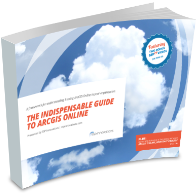SSP Innovation’s Matthew Stuart sits down to talk with our partners at a large utility in the Midwest about their switch from GE Smallworld to Esri.
1. What were the main drivers that made you decide to make a move away from GE Smallworld?
The original driver was to move away from the GE platform for OMS. When we made that decision, it opened up some things on the GIS side as well. It gave us an opportunity to see what else was out there.
At beginning of the RFP process, our water department really wanted Esri. They wanted to be able to use InfoMaster and Cityworks. In fact, there was a point where they considered building their own GIS separate from electric. That would have been crazy. GE Smallworld for Electric and Esri for Water.
So water was really pushing for Esri before everyone else fully came around to the idea.
A horrible ice storm in December 2013 showed the unstable nature of our current OMS. That stormed forced our executives to take some action. Studies were done showing the outages, how long it took to restore power, etc. The result was that we knew we needed a new OMS.
2. Why Esri?
Our main GE programmer retired, and that left a huge void in the GIS area for Smallworld. No one else knew the language, so GIS was literally not used for very much. Only a small core group of people used GIS, and only then to push out paper maps.
Several of us went to Memphis EGUG in 2014, and that was a real turning point. We were totally floored by Esri. We knew there were gaps and there were things we wanted to expand on, but we had no idea that Esri had stuff out there we could use. For example, we didn’t know about Collector or Portal. It was all really cool.
We always felt data should be in hands of people doing work. Getting data into a crew’s hands quickly – that opens things up and solves a lot of issues. We needed people to have a way to interact data, not just see a print. That had been lacking. We had no interaction with data at all.
So the Esri conference allowed us to see GIS in action and to hear what other people were doing with it. It gave us energy to start. We were determined after that to get licensed and make a move.
3. Why did you choose SSP?
It was interesting. We did the RFP twice. The first RFP was run out of IT, and in the end, we felt we weren’t getting all the benefits we could from Esri. We had a bigger vision.
We awarded SSP the contract after the second RFP was issued. We just felt it was the right fit. We are a large utility, but not a huge utility. SSP’s presentation felt right. SSP wasn’t so large that we would get lost in the shuffle. Our fear was that someone else would be so large that we wouldn’t get their A-team.
The SSP team was very personable, we got some really good feedback, and it felt like the right size company. And the scores came out better.
4. Tell us about the project.
We did a Discovery Phase during the fall of 2016 before the main project officially started. It was a lot of work – we did data mapping right off the bat – but doing that was beneficial for the team. During that phase, Ed Blair of Blair Services helped us understand our data, and how we were going to move the data. We were initially afraid to do data mapping early – we thought it was too much, too soon. Getting through architecture and the schedule was hard enough. To do data mapping on top of that, however, really helped.
The project has had all kinds of layers – functional development, conflation, integration. We have had a lot of functional pieces to tackle. We also had several other initiatives going on at the same time.
Bringing the right people to table is key. We have a very well-rounded group of people that have been running this.
5. How has it gone so far?
We are very proud of how it’s gone. We are a very small group, so we have focused on having the right people in the right room at the right time. We felt SSP would be flexible. We knew going in that we wouldn’t know everything, and that we would need some flexibility because we were so new. We learned a lot along the way. We were really green in the beginning, but now it’s second nature. We’re starting to talk the same talk.
6. Have there been any challenges? What did you do to overcome them? (And what would you say to other utilities facing the same challenges?)
We’ve had some challenges, especially trying to accomplish so much. But everyone is enthusiastic about what we’re doing. Our water engineers can’t wait.
The IT area has been the biggest challenge. If things were easier with IT, that would be great. That department as been changed over, revamped; it hasn’t been stable enough. They just can’t support this type of project. But we’re trying to move forward.
In terms of advice, be sure to have SMEs who are driven. People who are willing to make changes and willing to get things done. We pulled from pools of people. As soon as we needed SMEs, we pulled them. If one person wasn’t available, we always had backup. Sometimes we went three deep.
Having the right people engaged means they have buy-in. They know what we’re building. They have input.
7. Have there been any successes?
We were really excited about Ed Blair. He was phenomenal to work with. He is close to a genius. We could go to Ed or anyone at SSP and ask advice. We were new, and SSP gave us good advice.
We have literally hit every one of our scheduled tasks. Every date was hit. This speaks volumes about the people who want this to succeed. We didn’t know if everyone could keep up with this pace, but it has happened. We are proud of both sides.
This has been a great experience. We are tickled that we’re going to do more with SSP. There is so much more innovation to come. That excites us.
8. What will be the biggest benefit for Lansing BWL (and you personally) once the move is complete?
Mobile. Redlining. Engaging our field staff and crews like we haven’t been able to before. Giving our customer service and utility service areas a view into our world. Instead of them having to look up something on a mainframe, they can now interact with data. This is going to be totally different for our folks. It’s no longer just a flat piece of paper.
We’re getting excited about putting data into people’s hands as quickly as possible. What might have once taken six months will now take six minutes. This allows crews to make decisions.
In Summary
SSP has been working on the Esri implementation for over a year now, and as noted above, it has gone very well! In future articles, we will talk more in depth about some of the work we have done and the challenges we have faced along the way.


What do you think?